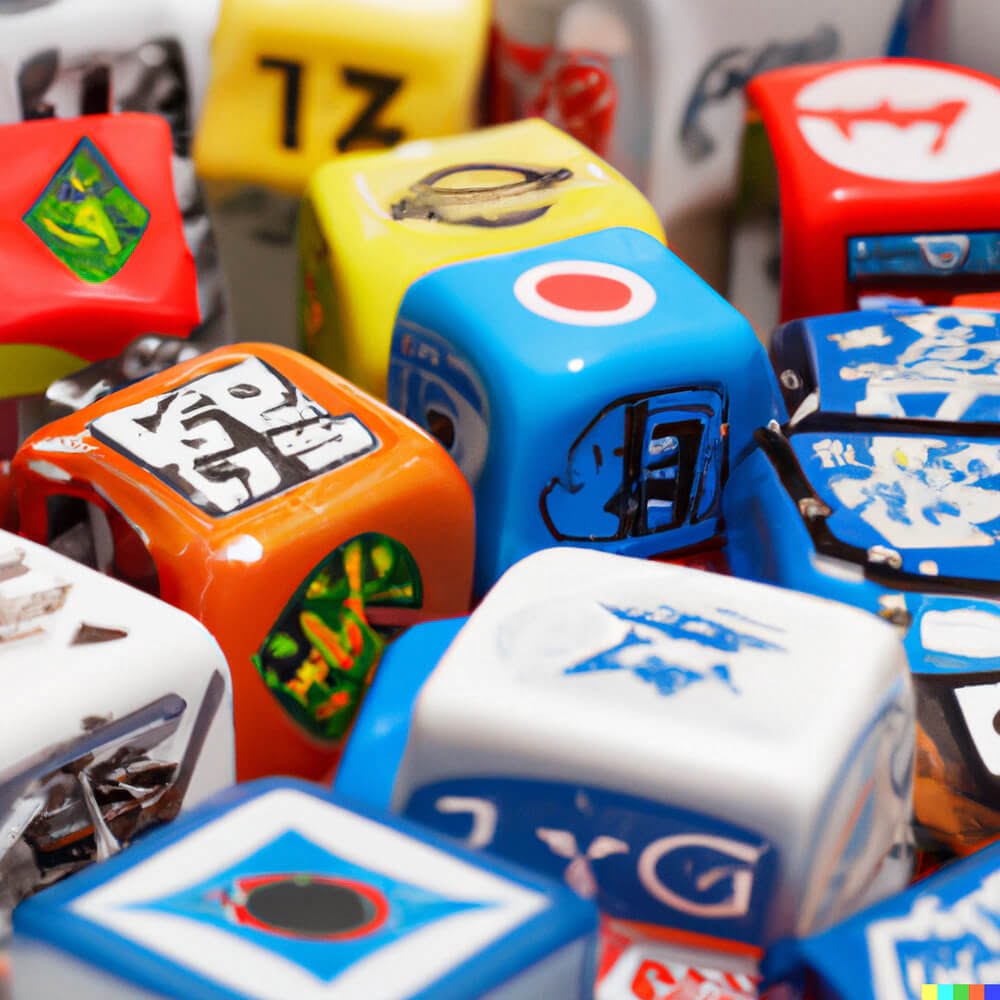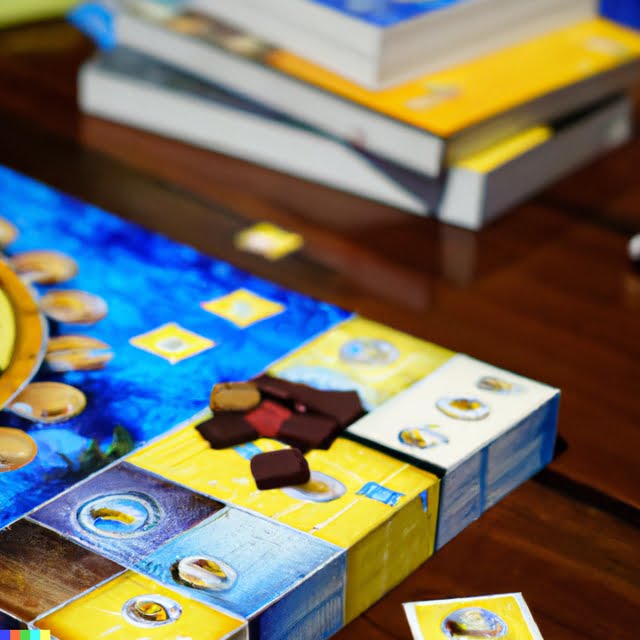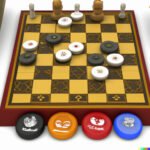In recent years, strategy board games have experienced a remarkable surge in popularity among both casual players and devoted enthusiasts. These intricately designed games offer a unique blend of intellectual challenge and social interaction that captivates players of all ages.
With the growing demand for innovative and immersive gaming experiences, many individuals are embracing the opportunity to design and create their own cost-effective strategy board games. This article will provide valuable insights and step-by-step guidelines on how to bring your board game ideas to life, catering to the rising demand for captivating gameplay without breaking the bank.
Strategy board games have emerged as a refreshing alternative to digital entertainment, offering tactile and engaging experiences that foster face-to-face interactions. Their ability to challenge players’ analytical thinking, strategic planning, and decision-making skills has resulted in a dedicated community of gamers seeking new and more fulfilling gaming experiences. Designing and creating your own strategy board game not only allows you to tap into this thriving market but also provides an opportunity for creative self-expression.
The benefits of designing a cost-effective strategy board game cannot be overstated. While established board game publishers often invest significant resources in production, marketing, and distribution, creating your own game on a limited budget can open doors to innovation and personalization. By harnessing your creativity, carefully considering target audiences, incorporating unique features, designing appealing artwork, sourcing affordable materials, and strategically promoting your game within online communities, you can navigate the competitive landscape of the board game industry with confidence.
Understanding the Target Market
When creating a cost-effective strategy board game, it is important to have a clear understanding of your target market. Conducting thorough research and analysis allows you to identify the specific preferences and interests of potential players, ensuring that your game will resonate with its intended audience. Here are some tips and techniques to help you in this process:
- Define your target audience: Start by defining the demographic characteristics of your ideal players, such as age range, gender, and interests. This will help you tailor the game mechanics, theme, and marketing strategies accordingly.
- Conduct surveys and interviews: Gather feedback from individuals who are likely to be interested in strategy board games. Develop a set of questions that will provide insights into their gaming habits, preferences, and expectations. Online surveys or interviewing people at local gaming events can be effective methods for collecting this information.
- Analyze competitors and industry trends: Study existing strategy board games within your niche to identify popular themes, gameplay mechanics, and design elements. Understanding what already exists in the market will help you make informed decisions about how to differentiate your game.
- Utilize online communities and forums: Engage with online communities where tabletop gamers discuss their experiences and preferences. These platforms can provide valuable insights into what players are looking for in strategy board games.
By following these steps, you will gain valuable insights into the wants and needs of your target market. This knowledge will guide the development of your cost-effective strategy board game, enabling you to create a product that resonates with its intended audience while keeping production costs low.
To format this section with an HTML ordered list:
Understanding the Target Market: Research and Analysis
- Define your target audience
- Conduct surveys and interviews
- Analyze competitors and industry trends
- Utilize online communities and forums
Designing the Gameplay Mechanics
When creating a cost-effective strategy board game, one of the most crucial aspects to consider is the gameplay mechanics. This is what sets your game apart and determines its level of engagement and enjoyment for players. Incorporating strategic elements and adding unique features will not only make your game stand out from the competition but also ensure that it offers a captivating experience for its players.
To begin designing the gameplay mechanics, it’s important to understand the core elements that make a strategy board game engaging and immersive. These elements typically include resource management, player interaction, decision-making, and long-term planning. By focusing on these foundational aspects, you can create a game that requires careful thinking, strategic planning, and tactical moves – all qualities that players are drawn to in strategy games.
In addition to incorporating these strategic elements, adding unique features can further enhance the appeal of your board game. These features could range from special abilities or powers for certain characters or factions within the game to innovative mechanisms that introduce unpredictability or variability into each playthrough. By introducing these unique aspects, you not only add excitement but also increase replayability, making your game more appealing to both casual players and avid board gamers.
Consider creating multiple paths to victory or different strategies that players can employ throughout the gameplay. This allows for different playing styles and adds depth to the overall experience. It’s also essential to balance complexity with accessibility – while complex mechanics can attract seasoned gamers, making your game too complicated may limit its appeal to a wider audience.
By carefully designing the gameplay mechanics with strategic elements and unique features in mind, you can create a cost-effective strategy board game that is both engaging and memorable for players. Taking inspiration from existing successful games while bringing your own creative twists will ensure that your game stands out among competitors in this ever-growing market.
Here are some key insights when designing gameplay mechanics:
- Understand the core elements of strategy board games, such as resource management and decision-making.
- Incorporate strategic elements that require careful thinking and tactical moves from players.
- Add unique features like special abilities or innovative mechanisms to enhance the game’s appeal and replayability.
- Create multiple paths to victory or different playing strategies to cater to different player preferences.
- Balance complexity with accessibility to widen the target audience for your game.
Creating a Theme and Storyline
When it comes to making a cost-effective strategy board game, creating a theme and storyline that captivates players is crucial. A compelling theme and storyline not only enhance the overall gameplay experience but also help in attracting and retaining players. In this section, we will explore the importance of theme and storyline in strategy board games and provide guidance on how to choose a theme that aligns with your target audience and complements the strategic mechanics of the game.
The Role of Theme and Storyline
A well-developed theme and storyline can turn an ordinary board game into an immersive experience for players. It creates a sense of purpose and context for the gameplay, giving players a reason to invest their time and energy into the game.
The theme helps create a world for the players to step into, while the storylines add depth, intrigue, and emotional engagement. By weaving together thematic elements with strategic mechanics, you can create an experience that keeps players coming back for more.
Choosing the Right Theme
When choosing a theme for your cost-effective strategy board game, consider your target audience’s interests and preferences. Research popular themes within the board gaming community to gauge what resonates with players. You can also draw inspiration from various sources such as history, mythology, science fiction, or even everyday life scenarios.
Additionally, ensure that the chosen theme complements the strategic mechanics of your game. For example, if your game involves resource management or empire-building mechanics, a historical or fantasy-themed setting might be appropriate. On the other hand, if your game focuses on deduction or bluffing mechanics, a detective or espionage-themed setting could be more suitable.
Prototyping and Playtesting
Prototyping and playtesting are crucial steps in the development process of creating a cost-effective strategy board game. By engaging in these iterative processes, game designers can refine their mechanics, balance gameplay, and gather valuable feedback from players. This section will explore the importance of prototyping and playtesting and provide tips on how to effectively carry out these activities.
The Importance of Prototyping
Prototyping involves creating a rough version of your game to evaluate its mechanics, components, and overall gameplay experience. While prototypes may not have polished artwork or high-quality materials, they serve as a means to test concepts and identify potential flaws or improvements. The early stages of prototyping should focus on refining the core mechanics of the game, as this forms the foundation for further development.
During prototyping, it is essential to keep an open mind and be willing to make changes based on feedback. Playtesters can provide valuable insights into what works well and what needs improvement in terms of rules, balance, pacing, and player engagement. Consider recruiting a diverse group of playtesters who align with your target audience to ensure you receive a range of perspectives.
Effective Playtesting Strategies
Playtesting involves organizing play sessions with a group of individuals who will actively experience your game firsthand. It is important to establish clear objectives for each playtesting session so that you can gather specific feedback on identified aspects of your game.
When conducting playtests, carefully observe how players interact with your game while allowing them to voice their thoughts openly. Encourage participants to provide constructive criticism and ask questions about unclear rules or confusing aspects. Taking notes during playtests will help you track patterns or recurring issues that may need addressing.
Furthermore, consider conducting blind playtests where you observe players without giving them any guidance or instructions. This method allows you to gauge if the rules and mechanics are easily understandable without any external assistance.
It is also beneficial to use playtesting to assess the duration of your game. Ensure that it neither feels too short nor excessively long, as finding the right balance is crucial for player enjoyment.
Art and Graphic Design
Creating visually appealing game components is crucial in captivating players and immersing them in the gameplay experience. However, many aspiring board game designers may worry about the cost associated with high-quality artwork and graphic design. Fortunately, there are several cost-effective solutions available that can help bring your strategy board game to life without breaking the bank.
One option is to utilize affordable graphic design tools and software. Programs like Canva and GIMP offer a wide range of features and templates that allow you to create professional-looking designs at a fraction of the cost of hiring a graphic designer. These tools often come with pre-made assets that you can customize to fit your game’s theme and style.
Another cost-effective solution is to collaborate with freelance graphic designers. Websites like Fiverr, Upwork, or Freelancer provide platforms where you can connect with skilled designers who offer their services at competitive rates. By working closely with freelancers, you can communicate your vision and expectations while staying within your budget.
Additionally, consider utilizing resources from open-source platforms or creative commons licenses. Websites such as Freepik or Pixabay offer a wide variety of free graphics, illustrations, and icons that you can incorporate into your game’s artwork. However, it is essential to review the licensing terms for each resource to ensure proper usage rights.
| Art and Graphic Design Solutions | Costs |
|---|---|
| Affordable Graphic Design Tools (Canva, GIMP) | Variety of pricing options available: Free versions with limited features; Paid subscriptions starting from $9/month |
| Freelance Graphic Designers (Fiverr, Upwork, Freelancer) | Prices vary depending on the project and designer’s rates. Typically ranges from $15 – $50 per hour. |
| Open-Source/Graphics under Creative Commons Licenses (Freepik, Pixabay) | Free to use with proper attribution and adherence to licensing terms |
It’s important to remember that while cost-effectiveness is essential, it is equally crucial to maintain a high standard of visual appeal. Investing in visually striking artwork can significantly enhance the overall player experience and make your game stand out among competitors. By exploring various cost-effective solutions and leveraging available resources, you can create a strategy board game with stunning visuals that will captivate players while staying within your budget.
Manufacturing and Production
Once you have finalized the design of your cost-effective strategy board game, it is crucial to find affordable materials and services for manufacturing. This section will provide insights into sourcing cost-effective suppliers for game components, such as game boards, card decks, dice, and game pieces.
When sourcing materials for your game components, it is important to compare quotes from different suppliers. Reach out to various manufacturers and request detailed quotes specifying the quantity and specifications of each component. This allows you to evaluate the costs involved in production and make an informed decision based on your budget.
In addition to comparing prices, it is also essential to evaluate the quality of materials offered by different suppliers. Request samples from potential manufacturers to ensure that the materials meet your standards in terms of durability and aesthetics. A well-made strategy board game with high-quality components can significantly enhance the overall player experience.
To find affordable suppliers for game components, consider reaching out to manufacturers both domestically and internationally. Overseas manufacturers often offer lower production costs due to lower labor costs or specialized expertise in board game manufacturing. However, keep in mind that international production may involve longer lead times and potential language or cultural barriers.
| Consideration | Description |
|---|---|
| Comparing Quotes | Request detailed quotes from different suppliers to evaluate costs. |
| Evaluating Quality | Request samples from potential manufacturers to ensure high-quality components. |
| Domestic vs International Suppliers | Weigh the pros and cons of working with domestic and international manufacturers. |
Once you have identified the most cost-effective suppliers, take the time to establish a clear and detailed manufacturing agreement. Define the specifications of each component, delivery timelines, quality control measures, and payment terms. By having a solid agreement in place, you can minimize any potential misunderstandings or disputes during the production process.
Overall, finding affordable materials and services for manufacturing your strategy board game is crucial to maintaining a cost-effective approach. With careful research and evaluation, you can ensure that your game components are of high quality while staying within your budgetary constraints.
Launching and Marketing
After putting in all the hard work and effort into creating your cost-effective strategy board game, it’s time to focus on launching and marketing your game to ensure its success. Without effective promotion and marketing strategies, even the best-designed games can struggle to find an audience. In this section, we will explore some strategies for promoting your cost-effective strategy board game within a limited budget.
One effective way to start promoting your game is by leveraging the power of social media platforms. Create dedicated social media pages for your game where you can share updates, gameplay videos, and engage with potential players. Utilize hashtags related to tabletop gaming and connect with relevant communities and influencers in the board game industry. By building an online presence through social media, you can generate interest and anticipation for your game even before its official launch.
Another cost-effective marketing tool is word-of-mouth. Encourage playtesters, friends, family members, or anyone who has experienced your game firsthand to spread the word about it. Engage them in discussions about their experiences with the game and ask if they would be willing to recommend it to others. Positive reviews from trusted sources can go a long way in building credibility and generating buzz around your cost-effective strategy board game.
Additionally, consider reaching out to local gaming communities or organizing small events such as demo nights or game tournaments where people can try out your game. Collaborate with local hobby stores or cafes that have a tabletop gaming focus, as they might be interested in hosting these events or selling your game on their shelves. These grassroots efforts can help create awareness about your game within a targeted audience while providing opportunities for players to experience it firsthand.
Lastly, take advantage of online platforms that cater specifically to independent board game designers like Kickstarter or Indiegogo. These crowdfunding platforms give you access to a vast community of gamers eagerly looking for new games to support. Create a compelling campaign page that showcases the unique features and gameplay mechanics of your cost-effective strategy board game.
Offer enticing rewards to backers to encourage them to pledge and support your project. By utilizing these platforms, you not only raise funds but also gain exposure to a wider audience of potential players.
Conclusion
In conclusion, creating a cost-effective strategy board game is an exciting and rewarding endeavor. By following the steps outlined in this article, you can bring your game idea to life while staying within your budget. The rising popularity of strategy board games presents a great opportunity for aspiring game designers to showcase their creativity and innovation.
Throughout the process, it is crucial to understand your target market and conduct thorough research and analysis. This will enable you to tailor your game to the preferences and interests of potential players, increasing its chances of success. Designing engaging gameplay mechanics with strategic elements and unique features will set your game apart from the competition, ensuring that it captivates players’ attention.
Creating a compelling theme and storyline will enhance the immersive experience for players. By carefully selecting a theme that aligns with your target audience and complements the strategic mechanics of the game, you can transport players into a captivating world that keeps them coming back for more.
Prototyping and playtesting are essential steps in refining the gameplay mechanics, balancing gameplay, and gathering valuable feedback. Through an iterative development process, you can ensure that your game is enjoyable and well-balanced before moving on to its visual appeal.
When it comes to art and graphic design, there are many cost-effective solutions available. Leveraging affordable graphic design tools or working with freelancers can help you create visually appealing gameplay components without breaking the bank.
Finding cost-effective suppliers for manufacturing your game components is vital in keeping production costs down. Comparing quotes and evaluating materials’ quality will ensure that you receive high-quality components at an affordable price.
Finally, launching and marketing your cost-effective strategy board game can be done effectively even on a limited budget. Utilizing online platforms and communities tailored to board game enthusiasts allows you to reach a wider audience without significant marketing expenses.
Frequently Asked Questions
How profitable is making a board game?
The profitability of making a board game can vary greatly depending on several factors. Successful board games that have a strong following and sell well can be highly profitable for their creators. However, it’s important to note that the competition in the board game industry is fierce, and not all games achieve this level of success.
Factors such as the production costs, marketing efforts, distribution channels, and target audience play a significant role in determining the profitability. It’s also worth mentioning that creating a profitable board game often requires continuous effort and investment in terms of designing new expansions or editions to keep the game fresh and appealing to customers.
What is the cost of making a board game?
The cost of making a board game can range from relatively low to quite high, depending on the complexity and scale of the game. Some of the major expenses involved include development and design costs, artwork and illustrations, manufacturing and production expenses (including materials like cards, boards, tokens), printing fees, packaging costs, marketing expenses (including promotional materials or ads), shipping fees for distribution, and potentially licensing fees if using copyrighted content or intellectual property from others.
Additionally, there may be costs associated with attending trade shows or conventions to showcase the game. It’s crucial for creators to carefully plan their budgeting and consider all these factors to ensure they have sufficient funds to bring their game to market.
What makes an effective board game?
An effective board game possesses certain qualities that engage players and create an enjoyable gaming experience. First and foremost, it needs clear rules that are easy to understand but offer enough depth for strategy or decision-making moments. The gameplay itself should strike a balance between luck-based elements (e.g., rolling dice) and skill-based aspects (e.g., tactical choices) so that players feel challenged but not overwhelmed by chance alone.
Additionally, an effective board game typically incorporates compelling themes or narratives that immerse players in the gameplay world through well-designed artwork or story elements. Engaging components such as quality playing pieces or cards can enhance the overall experience. Lastly, successful board games often provide a good combination of competition and cooperation to cater to different player preferences, allowing for both strategic interactions among players and opportunities for collaboration.

I love playing all kinds of games – from classics like Monopoly to modern favourites like Ticket to Ride.
I created this blog as a way to share my love of board games with others, and provide information on the latest releases and news in the industry.





